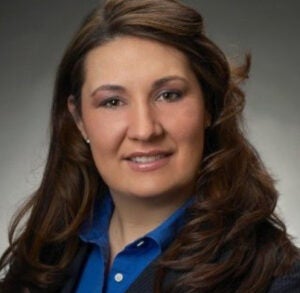 Frankly’s content management system (CMS) and its “managed programmatic” ad selling service help more than 200 local TV news stations with their digital presence. As consumption shifts from desktop to mobile, the company is positioning itself to help these local TV stations make the transition too.
Frankly’s content management system (CMS) and its “managed programmatic” ad selling service help more than 200 local TV news stations with their digital presence. As consumption shifts from desktop to mobile, the company is positioning itself to help these local TV stations make the transition too.
But Frankly itself was under transition a year ago, before which it simply built chat software for brands. The company pivoted when it bought Worldnow, which built websites for local TV news stations owned by companies like Meredith and Raycom Media, for $45 million last July.
Worldnow had missed the shift to mobile and its product fell behind, causing it to lose a couple of clients prior to the acquisition, said William Ammerman, who joined Frankly in January as head of advertising.
With the help of Frankly’s three dozen mobile engineers, the company could finally address the growing mobile audience by building out apps for Worldnow’s client stations.
Less than a year after the acquisition, Frankly unveiled both free mobile news and over-the-top (OTT) apps, timed to the National Association of Broadcasters conference this week.
“TV stations are trying hard to go from one platform, linear TV, to multiple platforms,” said Joe Fiveash, SVP of digital media and strategy at Raycom, which uses multiple platforms including Frankly for its digital presence. “Those that succeed are going to be important players in the new world where digital is deeply merged with TV.”
Building Mobile Monetization
But Frankly’s job doesn’t stop at creating mobile content experiences.
Ammerman is also developing ways to monetize the mobile, display and video inventory for broadcast stations, which receive a cut of the revenue. Frankly represents sites averaging 60 million to 70 million uniques, according to March comScore numbers. Since 60% of page views are mobile, he is focusing his efforts there even without the new apps.
On mobile, Ammerman is watching what kind of data Frankly could add to increase its value. If desktop has cookies, Ammerman said, mobile has location history, and it plans to collect and use that data, working with a partner, in order to extract more value.
For video, both on mobile and desktop, the main issue is supply. There isn’t enough of it. Frankly has a 100% fill rate on its video inventory, selling it all to an advertising agency based in Los Angeles.
So Ammerman is evaluating two different tech partners that aim to personalize videos and increase views: InfiniGraph, which captures multiple thumbnail images from a video and figures out which one gets the most clicks, and IRIS.TV, which makes video recommendations.
To improve yield for sites that get the majority of their traffic from mobile, Ammerman is evaluating partners and “shaking up our programmatic ad stack.” He’s adding header bidding solutions to the sites and was an alpha partner for DFP First Look.
There’s one growing format Frankly is approaching more cautiously: native. Local TV stations are especially sensitive to sponsored messaging, Ammerman said. “There is a fine line between being clear that something is sponsored messaging and making certain that it doesn’t interfere with the perception of your editorial quality.”
Besides putting into place more efficient, mobile-focused advertising, Frankly wants to boost business overall. It aims to grow from 70 million to 80 million uniques to more than 100 million monthly active users. Ammerman is hiring more staff in ad ops, campaign management and trading.
Frankly is also scouting for new publishers, and performance is critical to winning them over as customers, Ammerman said.
“Being able to demonstrate a 50% lift in CPMs and overall ad revenue shows our publisher partners that managed programmatic services yield results,” he said, “and that’s vital to our long-term success.”














